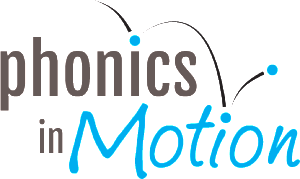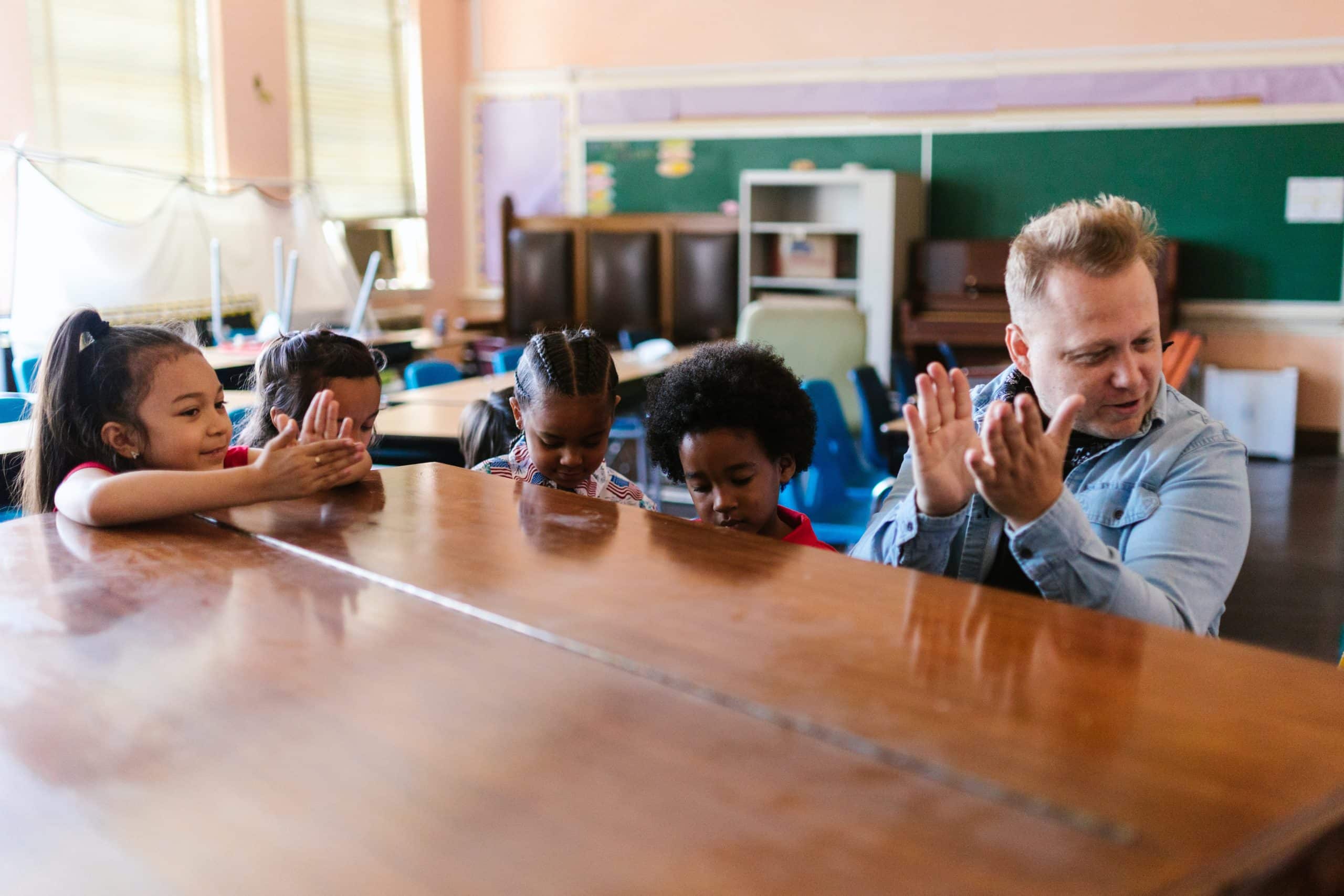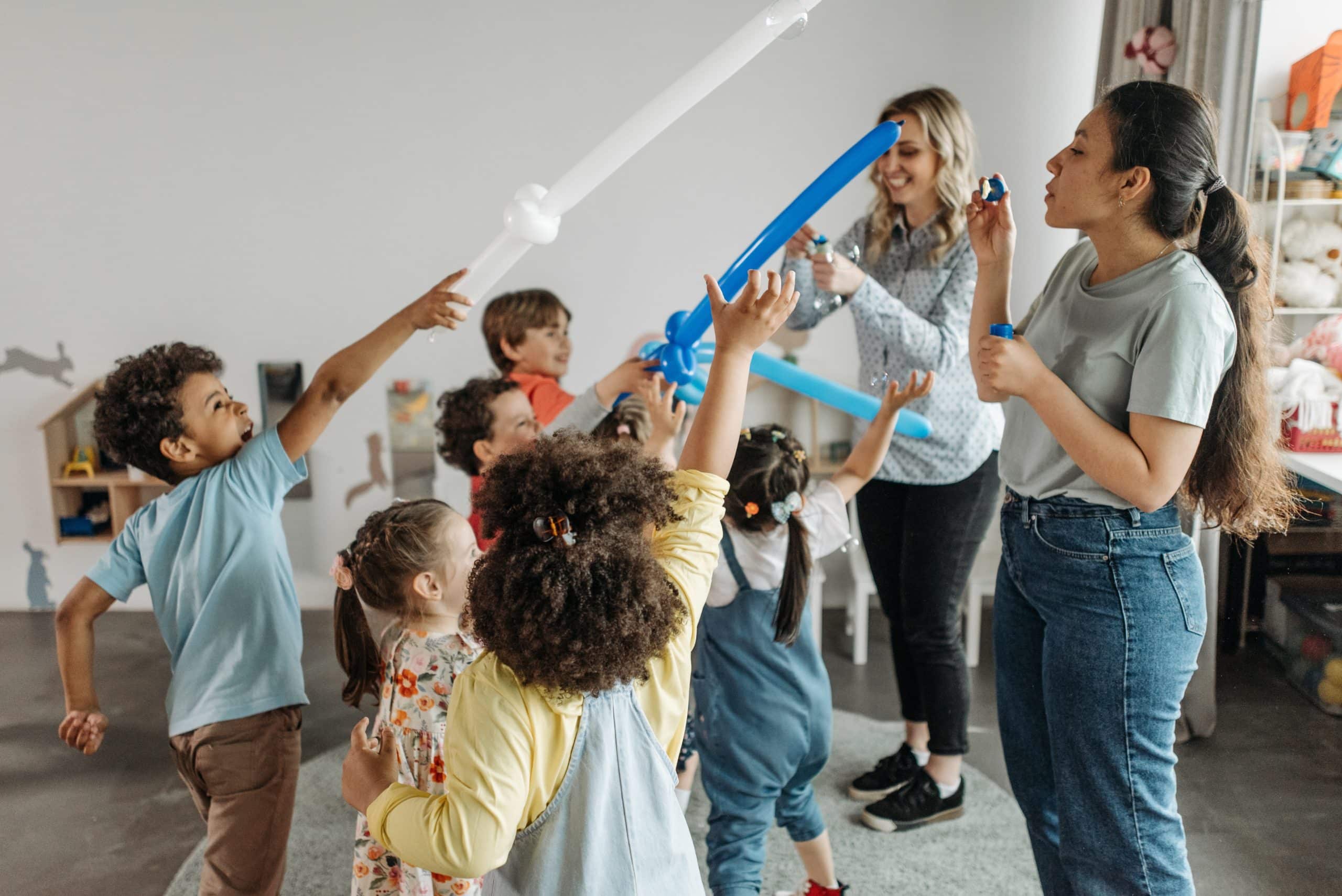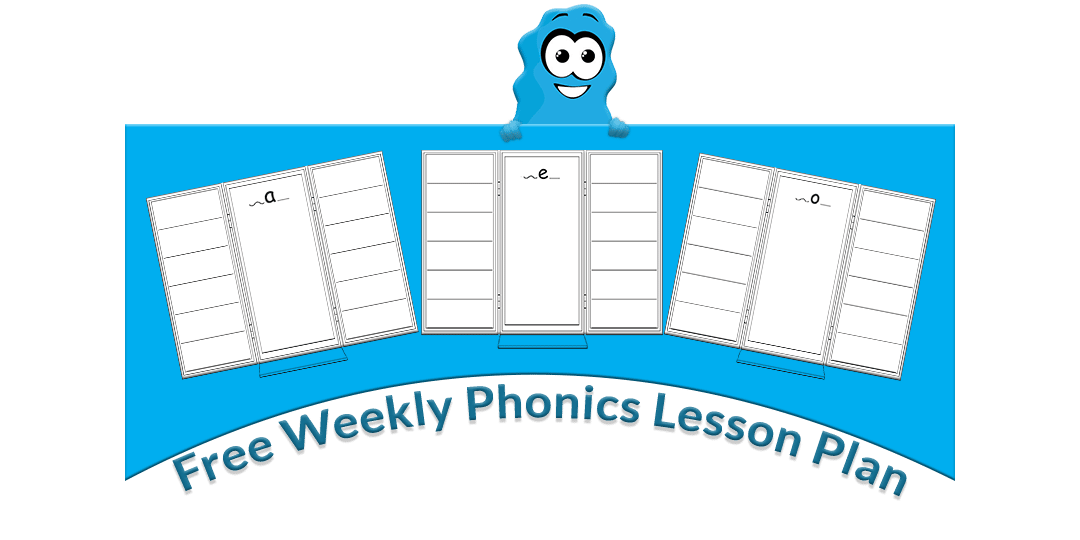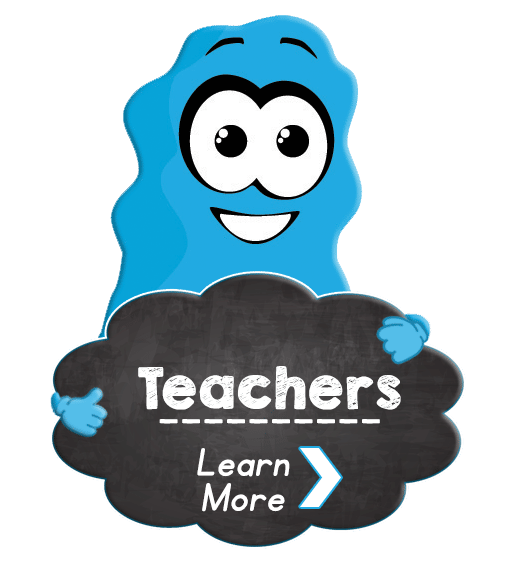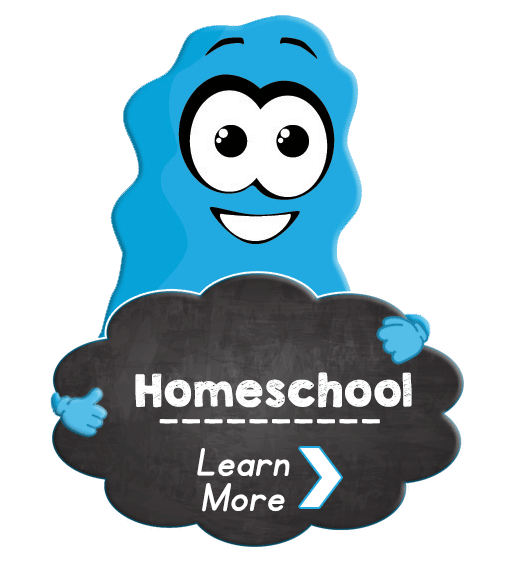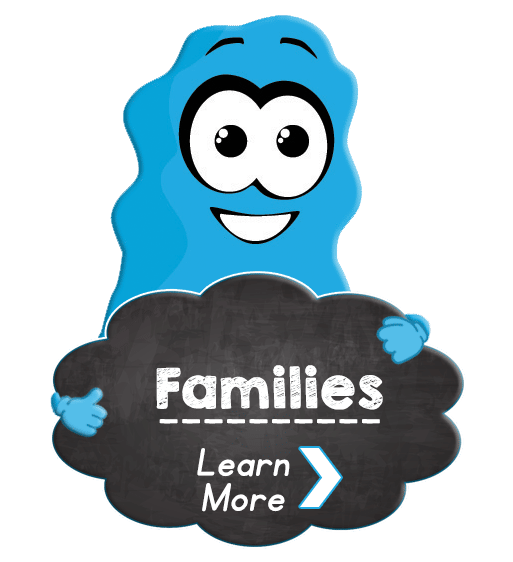How To Use Kinesthetic Movement In The Classroom
Close your eyes. Picture a room filled with twenty 1st graders. Do you see twenty little people sitting still and completely focused on their teacher? Or an overwhelmed teacher who looks like she needs her third coffee of the morning?
If you chose the second option, it may be time to integrate kinesthetic movement in the classroom.
Young learners are constantly in motion: tapping, rocking, and fidgeting are the sights that you would most likely encounter. Children are compelled to move and they do not stay still for long.
Kinesthetic movement in the classroom is an easy way to increase fun, learning, and retention skills by engaging a whole-body learning experience.
Applying Kinesthetic Movement in the Classroom
Brain breaks are one approach to kinesthetic movement in the classroom and are becoming increasingly popular as educators understand their benefits. Teachers allow students the opportunity to bounce around and satisfy their natural inclination to be on the move.
These brain breaks only last a minute, but studies have shown that students benefit when presented with the opportunity to use kinesthetic movement in the classroom, they show improvement in memory, mood, attention, and achievement.
Incorporating songs, dancing, yoga, and acting into your day-to-day classroom environment is a two-fold strategy. Not only do kids get their blood pumping, improve relationships with classmates, and have fun, but they are able to learn in a tactile manner.
Kinesthetic movement in the classroom allows students who may not thrive in a traditional educational setting to show what they’re made of. This is their time to shine, show off their personality, and form a lasting positive relationship with learning.
However, it is time to dig deeper into the benefits of kinesthetic movement in the classroom. It is time to question how we can benefit our students and provide the best possible learning outcomes.
So, do we have to limit movement in the classroom to just a few moments of fun? What if we could harness the energy of our learners and use it to our advantage as teachers? And, most importantly, how can we incorporate motion not only into the lesson; but throughout the entire learning process?
KMPs: Phonic in Motion’s Approach to Fun Kinesthetic Movement in the Classroom
Dr. Terry Kindervater is a pioneer in incorporating kinesthetic movement in the classroom. She developed a concept called Kinesthetic Motion for the Phonemes (KMPs), which form the foundation of Phonics in Motion. Her philosophy is that learning should retain the integrity of childhood and that whole-body, kinesthetic movement in the classroom is the fundamental key to early childhood literacy success.
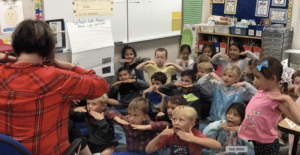 The Kinesthetic Motion for the Phonemes (KMPs) are used in daily lessons. These motions are specifically developed to teach phonemes (distinct units of sound) that students are learning. When presented with a new phoneme, children learn a move that is specific to that sound. The KMPs are specially designed to integrate fun into a lesson.
The Kinesthetic Motion for the Phonemes (KMPs) are used in daily lessons. These motions are specifically developed to teach phonemes (distinct units of sound) that students are learning. When presented with a new phoneme, children learn a move that is specific to that sound. The KMPs are specially designed to integrate fun into a lesson.
To understand this approach, students are not only hearing the sound, and making the sound themselves; they are also learning a unique move to pair with that sound. The class is using not only sound but a kinesthetic movement in the classroom to create meaning and knowledge.
The ability to incorporate this learning technique in a classroom is transformational for both students and educators. Children in this learning environment can link sound to a move and implement it not only during the lesson but when working independently, reading aloud or to self, and writing. Students have daily opportunities to see their teacher and peers model the KMPs and practice kinesthetic movement in the classroom.
Kids Learn Best When They are Having Fun
Many studies show that primary children learn best when they can link motion and sound to their learning. Children gain knowledge by linking new concepts to ones that were previously learned to create meaning.
Early literacy education should maintain equality so that learners can focus on the joy of learning. They can focus on the learning instead of feeling nervous that they don’t know how to execute a skill correctly. Moving your body to match sounds and letters is much more risk-free than trying to handle a pencil and correctly form letters on paper.
In the study The Neuroscience of Joyful Education, Judy Willis discusses the importance of lessening a stress response in education environments. She believes that incorporating fun into the classroom helps encourage students to positively reinforce the concepts, and opens doors to revisiting the activity in a positive way.
Phonics in Motion shares this same belief and ensures that the instructional methods used are engaging and entertaining to school children. The lessons allow children to be an active part of their learning. PIM leads to deeper understanding by implementing motion in every phonemic awareness and phonics lesson, which is how children learn best.
Breaking Down Barriers in the Classroom
All students enter the learning environment with different skill sets. Differences in parental teaching, access to preschool facilities, socialization, and cultural experiences all play a role in what a student comprehends when they enter kindergarten.
Integrating movement-based techniques in the classroom breaks down the barriers that may highlight diversity, provide equality, and embrace all learning styles, including kinesthetic learners. All students benefit from dancing in the classroom. All students benefit from singing songs. And all students benefit from linking motions to phonemes to solidify early literacy skills.
Providing a risk-free environment in early literacy education forms the building blocks of a positive relationship with education, and should be the primary focus of educators.
Ready to Introduce Kinesthetic Movement in the Classroom?
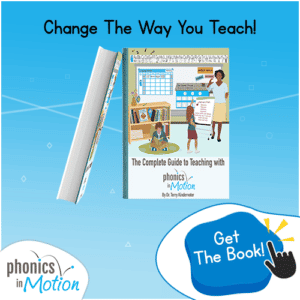 Since it is well known that many students do not reach expected literacy outcomes, it is time for educators to change their approach. Negative educational experiences are long-lasting and impact students all the way through college and into the workplace. In order to improve literacy outcomes, educators need to introduce methods that actually work.
Since it is well known that many students do not reach expected literacy outcomes, it is time for educators to change their approach. Negative educational experiences are long-lasting and impact students all the way through college and into the workplace. In order to improve literacy outcomes, educators need to introduce methods that actually work.
If you’re curious about how Phonics in Motion can amplify your teaching strategies and encourage notable outcome improvement in your classroom, check out our exclusive e-book. We outline proven step-by-step methods of incorporating kinesthetic movement in the classroom, developed by early literacy expert Dr. Terry Kindervater.
If you’re a teacher or administrator interested in learning more about how to incorporate the Phonics in Motion system into your classroom or school, visit our website at www.phonicsinmotion.com/store
